Fitting curves with rnn
Generate the curve point set, X ﹣ ax represents the abscissa, y ﹣ line represents the corresponding ordinate
x_ax = np.linspace(-1, 1, num) def fun(x): # Is it not very friendly to the square sum exponential function, because the range of values changes too much? Reduce the definition field to - 1,1 # return 3 * x + 4 # return np.sin(x) # return np.cos(x) # return np.sqrt(np.abs(x)) # return x ** 2 # Rectangular wave y = np.ones_like(x) y[np.floor(x) % 2 == 0] = 0 return y y_line = fun(x_ax)
Split the point set
# How many groups, how many in each group def get_data(batch_size, data_size): x = [] y = [] for i in range(batch_size): s = np.random.randint(0, num - data_size) x.append( np.array(y_line[s:s + data_size]).reshape((1, data_size)) ) y.append(np.array(y_line[s + data_size]).reshape((1, 1))) return np.concatenate(x), np.concatenate(y)
Effect
Fit the quadratic function, when the training definition domain is - 1, 1, then expand to - 2, 2 when displaying, and use different intervals, we can find that the effect is still good within - 15, 1.5
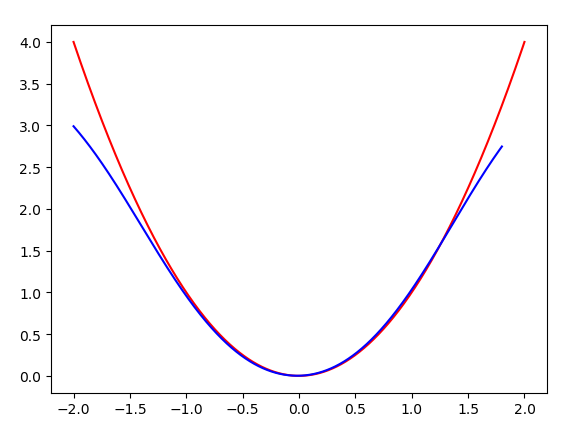
Line prediction
It seems that it is better not to add activation function, but the reason is that the range of value range changes too much
Training - 10, 10, test - 20, 20
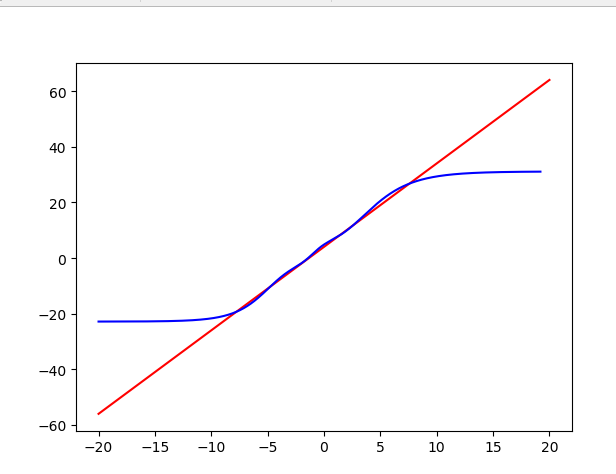
Plus activation function training-2,2, test-4,4

Trigonometric function, for periodic reasons, with a limited range of values, works well
Training - 10, 10, test - 20, 20, almost all fit can be seen
The influence of activation function on trigonometric function is almost not great
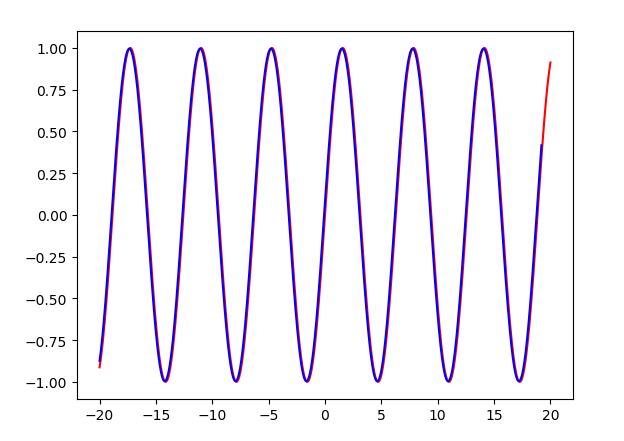
Training-2,2, test-20,20 almost perfect~
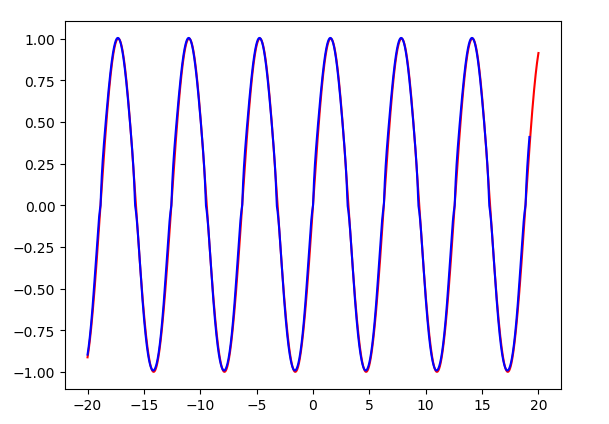
Rectangular wave
Training - 10, 10, test - 20, 20, good results
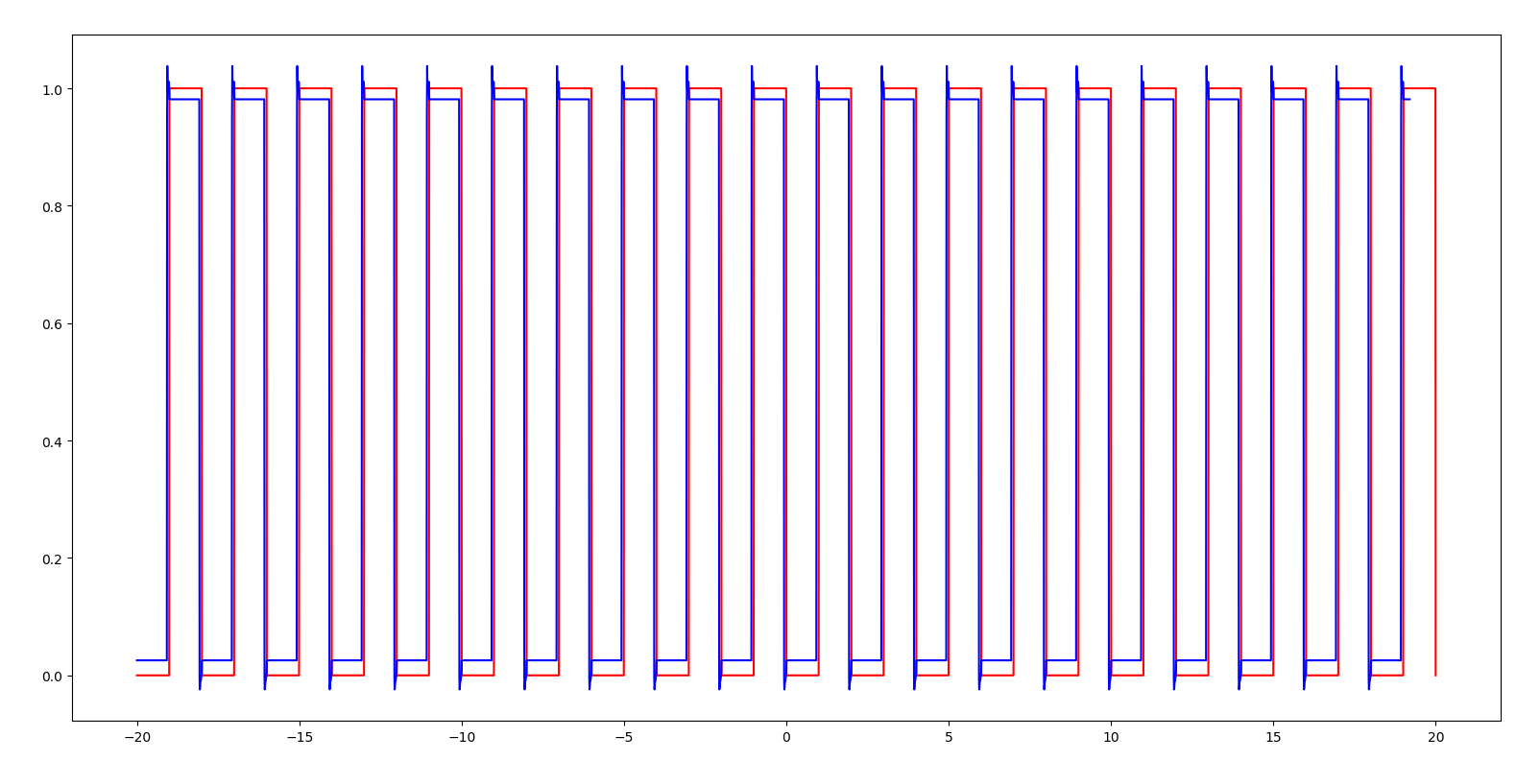
On the whole, rnn is good for the training prediction with periodicity and small variation range, but bad for the monotone sequence.... Maybe we can use a multi-layer and multi time model
It should be able to do time series analysis
import tensorflow as tf import numpy as np import matplotlib.pyplot as plt n_input = 10 lstm_size = 100 n_output = 1 batch_size = 100 train_num = 10000 show_num = 100 num = 1000 # Sequence length x_ax = np.linspace(-10, 10, num) # x_ax = np.linspace(-2, 2, num) def fun(x): # Is it not very friendly to the square sum exponential function, because the range of values changes too much? Reduce the definition field to - 1,1 # return 3 * x + 4 # return np.sin(x) # return np.cos(x) # return np.sqrt(np.abs(x)) # return x ** 2 # Rectangular wave y = np.ones_like(x) y[np.floor(x) % 2 == 0] = 0 return y y_line = fun(x_ax) # How many groups, how many in each group def get_data(batch_size, data_size): x = [] y = [] for i in range(batch_size): s = np.random.randint(0, num - data_size) x.append( np.array(y_line[s:s + data_size]).reshape((1, data_size)) ) y.append(np.array(y_line[s + data_size]).reshape((1, 1))) return np.concatenate(x), np.concatenate(y) x_in = tf.placeholder(tf.float32, [None, n_input]) y_in = tf.placeholder(tf.float32, [None, 1]) # Initialization weight weights = tf.Variable(tf.truncated_normal([lstm_size, n_output], stddev=0.1)) # Initialize offset value biases = tf.Variable(tf.constant(0.1, shape=[n_output])) # Define RNN network def RNN(X, weights, biases): inputs = tf.reshape(X, [-1, 1, n_input]) print(inputs.shape) # (?, 1, 10) # Define LSTM basic CELL lstm_cell = tf.contrib.rnn.BasicLSTMCell(lstm_size) # outputs is the state of each step # final_state[0] is cell state # Final state [1] is hidden state equivalent to outputs[-1] outputs, final_state = tf.nn.dynamic_rnn(lstm_cell, inputs, dtype=tf.float32) print(outputs.shape) # (?, 1, 100) print(final_state[0].shape) # (?, 100) print(final_state[1].shape) # (?, 100) # results = tf.nn.softmax(tf.matmul(final_state[1], weights) + biases) results = tf.nn.leaky_relu(tf.matmul(final_state[1], weights) + biases) # results = tf.matmul(final_state[1], weights) + biases print(results.shape) # (?, 1) return results # Calculate the return result of RNN prediction = RNN(x_in, weights, biases) # loss function loss = tf.reduce_sum((y_in - prediction) ** 2) # Optimize with Adam optimizer train_step = tf.train.AdamOptimizer(1e-4).minimize(loss) # Initialization init = tf.global_variables_initializer() with tf.Session() as sess: sess.run(init) for epoch in range(train_num): batch_xs, batch_ys = get_data(batch_size, n_input) sess.run(train_step, feed_dict={x_in: batch_xs, y_in: batch_ys}) if not (epoch + 1) % show_num: batch_xs, batch_ys = get_data(batch_size, n_input) acc = sess.run(loss, feed_dict={x_in: batch_xs, y_in: batch_ys}) print("Iter " + str(epoch + 1) + ", Testing loss= " + str(acc)) x_ax = np.linspace(-20, 20, num * 5) # x_ax = np.linspace(-2, 2, num * 2) # x_ax = np.linspace(-4, 4, num * 2) y_line = fun(x_ax) xx = [] for i in range(len(y_line) - batch_size): # print(i, i + n_input, len(x_line)-batch_size) xx.append( np.array(y_line[i:i + n_input]).reshape((1, n_input)) ) xx = np.concatenate(xx) print(xx.shape) p = sess.run( prediction, feed_dict={x_in: xx} ) print(p.shape) plt.plot(x_ax[:len(y_line)], y_line, 'r') plt.plot(x_ax[:len(p)], p, 'b') plt.show()